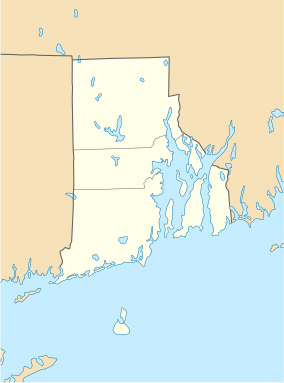Blackstone River Valley National Historical Park
| Blackstone River Valley National Historical Park | |
|---|---|

Blackstone Canal
|
|
| Location | Providence County, Rhode Island / Worcester County, Massachusetts, United States |
| Nearest city | Pawtucket, Rhode Island |
| Coordinates | 41°52′39″N 71°22′57″W / 41.87750°N 71.38250°WCoordinates: 41°52′39″N 71°22′57″W / 41.87750°N 71.38250°W |
| Created | December 19, 2014 |
| Governing body | National Park Service, State, Private |
| Website | Blackstone River Valley National Historical Park |
Blackstone River Valley National Historical Park is a National Park Service unit in the states of Rhode Island and Massachusetts. The park was created for the purpose of preserving, protecting, and interpreting the industrial heritage of the Blackstone River Valley and the urban, rural, and agricultural landscape of that region. The Blackstone River Valley was the site of some of the earliest successful textile mills in the United States, and these mills contributed significantly to the earliest American Industrial Revolution. The subsequent construction of the Blackstone Canal, a few years after the successful completion of the Erie Canal, helped to sustain the region's industrial strength.
The park's establishment was included as part of the National Defense Authorization Act for Fiscal Year 2015, which was signed into law by President Barack Obama on December 19, 2014.
It is closely related to the Blackstone River Valley National Heritage Corridor, which is not a unit of the National Park System, but the National Historical Park contains only a subset of the sites associated with that National Heritage Area. The Blackstone River Valley National Heritage Corridor continues to exist independently of the National Historical Park.
Samuel Slater, an English industrialist, constructed his first textile mill in Pawtucket, in 1793, along the Blackstone River. In addition to utilizing advanced new technology he had learned about in England, which had previously never been used in an American mill, Slater implemented an innovative management style that helped his factory find significant success. He went on to establish other factories, including company towns like Slatersville. The textile industry continued to expand in the Blackstone region, spawning numerous mill towns. By the late 1820s, the industry was thriving to such an extent that more efficient transportation methods were needed, which led to the construction of the Blackstone Canal connecting Worcester, Massachusetts to the sea port at Providence, Rhode Island. The region's advances were an important component in American industrial history.
...
Wikipedia


